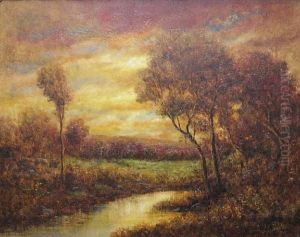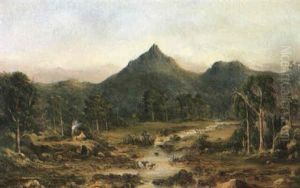Robert Proctor Beauchamp Paintings
Robert Beauchamp was an American painter known for his vibrantly expressive works which often combined figurative and abstract elements. Born on February 26, 1923, in Denver, Colorado, Beauchamp grew up in a time of great change and upheaval that would later be reflected in the energetic and often chaotic style of his art.
Beauchamp's early life was marked by a passion for art, which led him to study at the University of Denver before moving to New York City to attend the Art Students League. There, he would be influenced by the instructors and atmosphere of creativity that pervaded the institution in the mid-20th century. His style was influenced by Abstract Expressionism, but he maintained a commitment to figurative work, creating a unique blend that was characteristic of his approach to painting.
Throughout his career, Beauchamp's work was celebrated for its dynamic compositions and emotional intensity. He was associated with the figurative expressionist movement, which sought to incorporate the human figure into the gestural and often abstracted styles of the time. His paintings often featured personal narratives, dream-like sequences, and mythological themes, populated by exaggerated, distorted figures and animals in fantastical settings.
Beauchamp's work was exhibited widely during his lifetime, including at prestigious venues such as the Whitney Museum of American Art and the Museum of Modern Art in New York. Despite his success, he never became a household name like some of his contemporaries. Yet, he remained a respected figure among his peers and art aficionados for his distinctive style and contribution to the post-war American art scene.
Robert Beauchamp's artistic journey ended with his death on March 1995 in New York City. His legacy lives on through his works, which continue to be displayed and studied as an important part of American art history. Beauchamp's paintings are held in numerous public collections, including the Metropolitan Museum of Art and the Smithsonian American Art Museum, ensuring that his vision and voice remain accessible to future generations of art lovers and historians.

